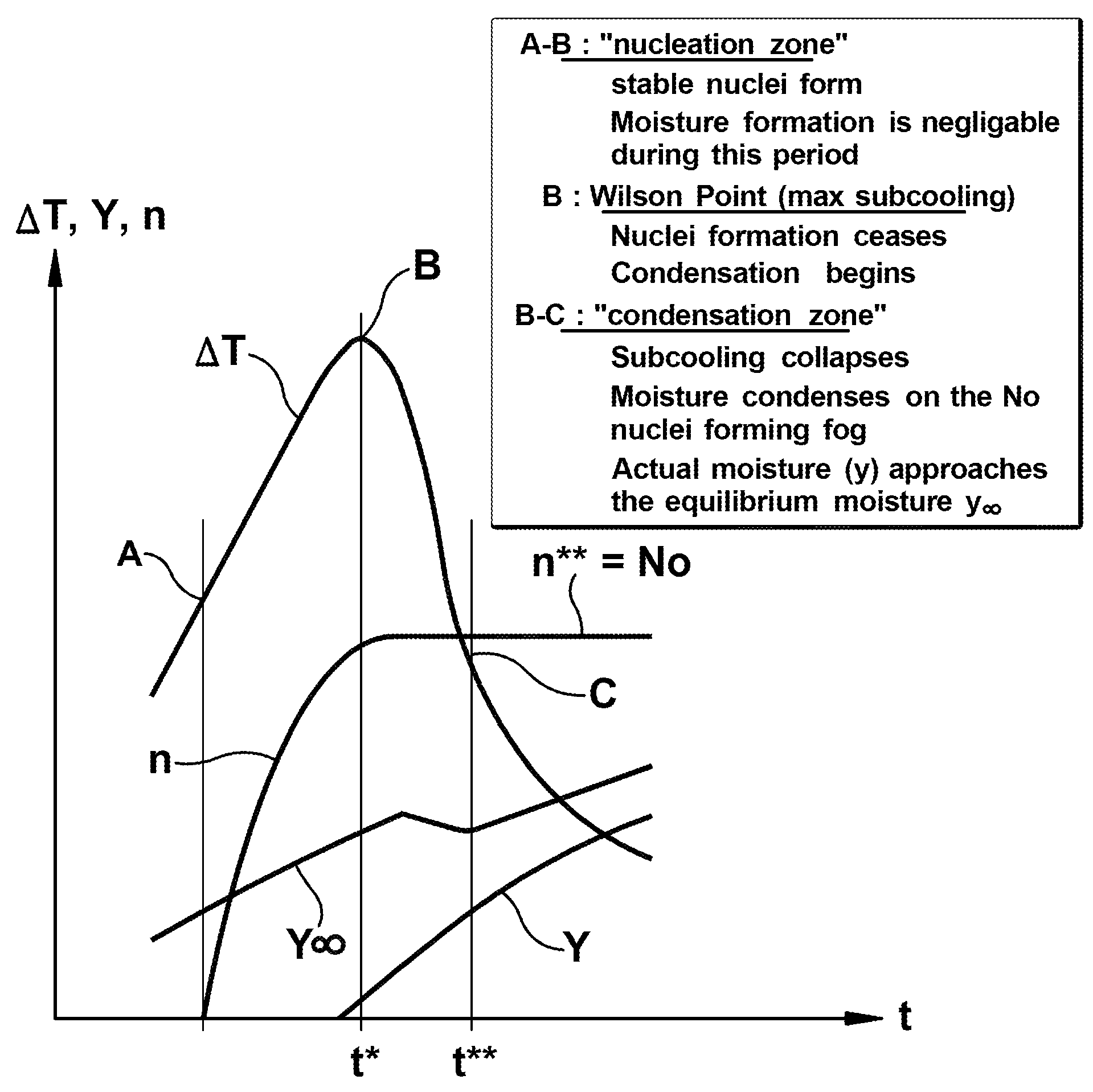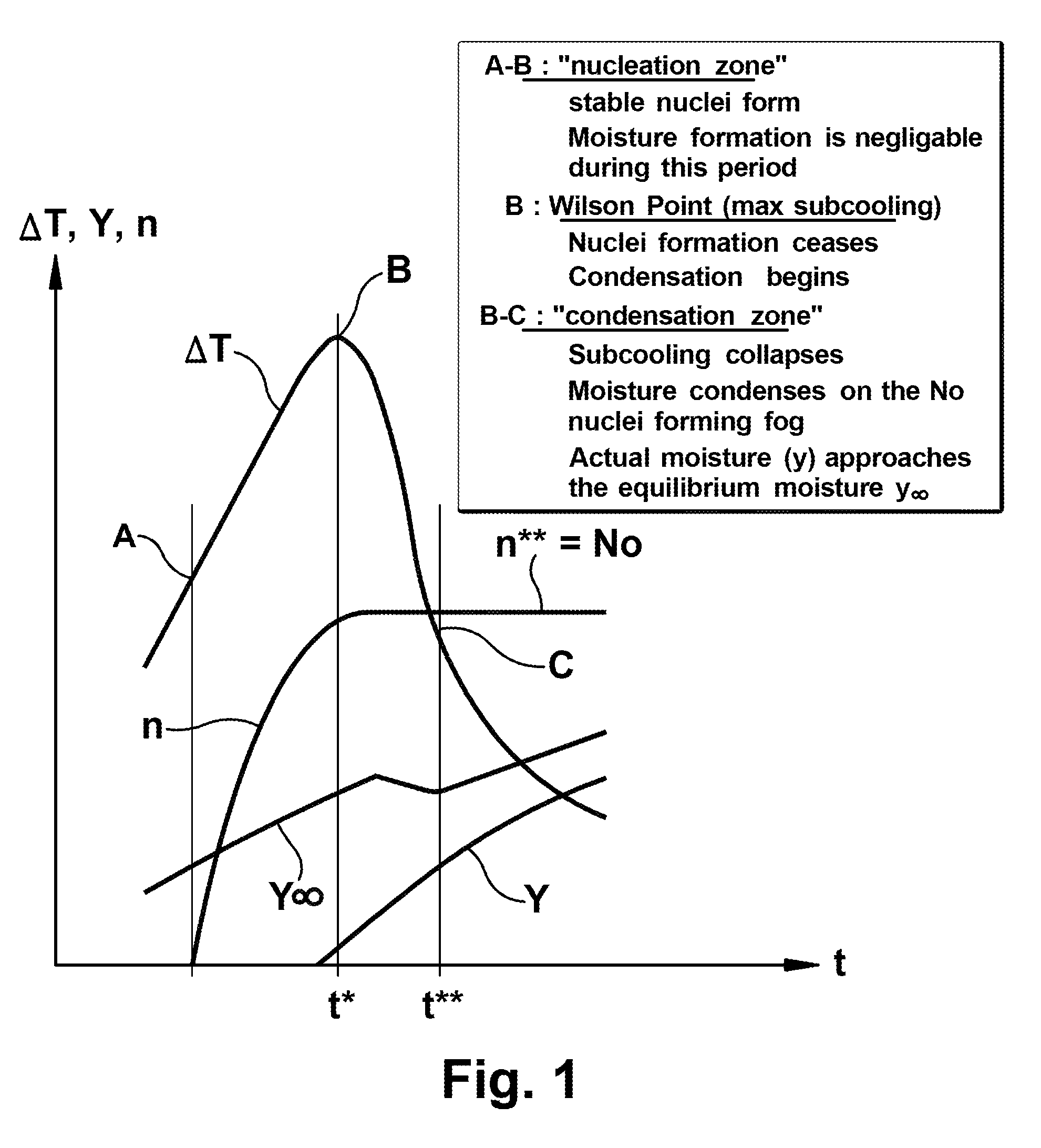Systems and methods for determining steam turbine operating efficiency
a technology of steam turbines and efficiency, applied in the direction of machines/engines, specific gravity measurement, instruments, etc., can solve the problems of not being able to identify the effect of design change in the flowpath, neither the traditional empirical approach nor the cfd technology is suitable for turbine flow path design optimization, and the approach is unsuitable for design optimization
- Summary
- Abstract
- Description
- Claims
- Application Information
AI Technical Summary
Problems solved by technology
Method used
Image
Examples
Embodiment Construction
[0016]As one skilled in the art will appreciate, losses induced by the moisture content in the flowpath of a steam turbine have long been realized and studied. The losses associated with moisture content can be described with the following categories: nucleation losses, supersaturation losses, and mechanical losses.
Nucleation Losses
[0017]The behavior of the wet steam as it expands through a steam turbine is considerably different than the idealized 2-phase system dealt with in equilibrium thermodynamics. The expansion rate is generally too rapid for equilibrium saturation conditions to be maintained. As a result, the vapor usually becomes supersaturated as it expands. That is, the vapor temperature drops below the corresponding saturation temperature at the local pressure. The level of supersaturation at any point during the expansion is defined by the local subcooling ΔT:
ΔT=Tg(P)−Tg
[0018]When the subcooling ΔT reaches a critical level the formation of supercritical liquid clusters...
PUM
| Property | Measurement | Unit |
|---|---|---|
| enthalpy | aaaaa | aaaaa |
| pressure | aaaaa | aaaaa |
| velocity | aaaaa | aaaaa |
Abstract
Description
Claims
Application Information
 Login to View More
Login to View More - R&D
- Intellectual Property
- Life Sciences
- Materials
- Tech Scout
- Unparalleled Data Quality
- Higher Quality Content
- 60% Fewer Hallucinations
Browse by: Latest US Patents, China's latest patents, Technical Efficacy Thesaurus, Application Domain, Technology Topic, Popular Technical Reports.
© 2025 PatSnap. All rights reserved.Legal|Privacy policy|Modern Slavery Act Transparency Statement|Sitemap|About US| Contact US: help@patsnap.com



